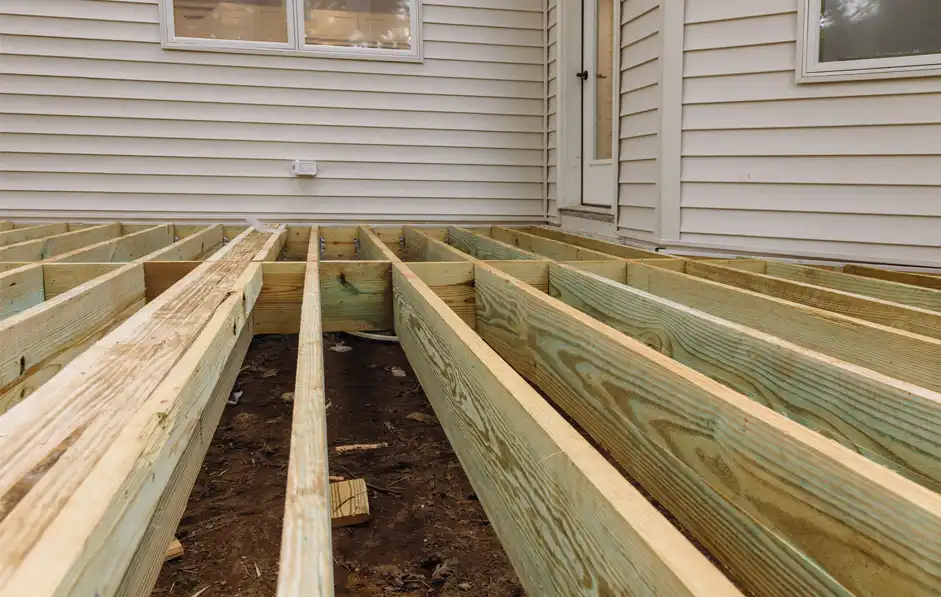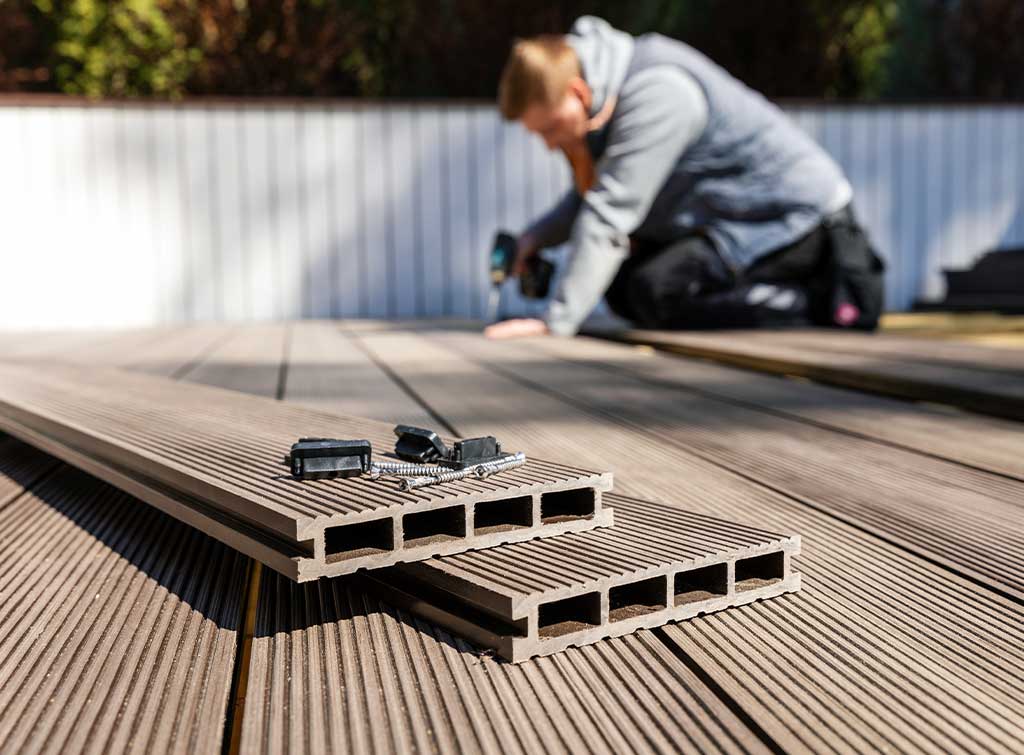Before summer arrives, get advice from a skilled deck installer Austin to get your project moving.
Before summer arrives, get advice from a skilled deck installer Austin to get your project moving.
Blog Article
Just how to Select the Right Materials for Your Deck Setup Project
Selecting the proper products for your deck installment task can seem difficult. There are various aspects to consider, from longevity and maintenance to aesthetics and ecological impact. The selection in between standard wood and composite products, each with its own collection of advantages and drawbacks, can be especially tough. The trick is to stabilize your budget, style preferences, and way of life needs to develop a deck that will certainly enhance your exterior room for several years ahead.
Comprehending the Various Types of Deck Products
When starting a deck installation task, the option of materials comes to be an essential decision. Numerous choices are available, each with one-of-a-kind qualities and visual allure. Standard wood, for instance, provides a timeless, natural look and is typically more cost-effective. It can warp over time and needs routine maintenance. Composite products, on the other hand, are a mix of wood and plastic, providing longevity and resistance to weather elements. They demand less upkeep compared to timber yet are usually more expensive. Another alternative is plastic, which is virtually maintenance-free and immune to pests and rot, albeit less natural-looking. By recognizing these differences, property owners can make a more enlightened choice on the most ideal deck product for their particular needs.
Assessing the Resilience and Maintenance Requirements of Deck Materials
Analyzing the resilience and maintenance requirements of deck products is a crucial step in deck setup. Durability includes the product's capability to stand up to rough climate conditions, damage, and its durability. For example, cedar and redwood are normally resistant to rot and bugs, making them resilient choices. On the other hand, pressure-treated timber, while sturdy, might require more maintenance because of its susceptibility to cracking and contorting.
Recognizing maintenance needs is just as crucial. Some products require regular sealing or staining to keep their look and resist moisture damages, while others, like composite outdoor decking, demand less maintenance. By reviewing these factors, one can select the most ideal outdoor decking material, guaranteeing a balance in between durability, upkeep demands, and aesthetic charm.
Cost Evaluation: Contrasting Timber and Composite Decking
Although expense may at first feel like a secondary problem, it is a significant aspect when comparing timber and composite outdoor decking. Timber, usually a less expensive option, has a lower ahead of time price. Nonetheless, in time, maintenance expenditures can build up, possibly making timber extra pricey in the future. These maintenance prices may include staining, securing, or replacing damaged boards. On the various other hand, composite outdoor decking, while pricier originally, requires much less upkeep, potentially decreasing long-lasting costs. Yet, it's important to keep in mind that composite decking isn't unsusceptible deterioration, and replacement costs can be high. Potential deck proprietors should consider their spending plan and desire to maintain their decks when determining between timber and composite outdoor decking.
Visual Appeals and Layout Flexibility of Decking Materials
While cost is an important factor to consider, the visual appeal and layout adaptability of decking materials also play a considerable function in the decision-making process. Different materials supply varying levels of visual allure. All-natural wood outdoor decking provides a classic, ageless look, while composite materials supply a vast range of colors and structures to suit diverse preferences and designs. In a similar way, style flexibility describes the ability to form web and manipulate the outdoor decking product to meet specific style requirements. Wood, for instance, supplies high layout adaptability as a result of its simplicity of cutting and forming. Compound products, while less versatile in layout, are still versatile enough for the majority of deck styles. These aspects, as a result, are important determinants in the option of outdoor decking product.
Environmental Effect of Decking Materials
When picking decking products, one need to consider not only visual appeals and resilience, yet also the environmental effect. It's crucial to assess the sustainability of products and check out recycled outdoor decking options. Comprehending the potential impact on regional environments will certainly make certain an extra ecologically accountable option.
Examining Product Sustainability
In the world of deck construction, evaluating product sustainability is a crucial step. This involves reviewing the ecological impact of each potential product, thinking about factors such as the power needed for its production, its carbon impact, and its end-of-life disposal or reusing choices. For instance, timber is a renewable energy, however unsustainable logging techniques can lead to deforestation. Additionally, composite decking products often incorporate wood and plastic, decreasing the demand for brand-new timber but raising reliance on nonrenewable fuel sources. Aluminum and other why not try here steels might be extra sturdy and recyclable, yet their removal and processing can be energy-intensive. Thus, the selection of decking materials ought to stabilize functionality, aesthetic appeals, price, and sustainability to make certain a liable and durable installation.
Recycled Outdoor Decking Options

Composite outdoor decking is particularly preferred as a result of its sturdiness and convenience of upkeep. It's resistant to rot, bugs, and fading, making it a durable choice. Recycled plastic outdoor decking, on the other hand, is highly resistant and requires very little maintenance. While these products might bring a greater first price, their durability and reduced environmental effect make them a wise investment for the eco-conscious homeowner.

Impact on Local Communities
While the benefits of using recycled products for decking can not be overemphasized, it's just as important to take into consideration the wider environmental implications of these selections. Correct disposal of old outdoor decking is crucial to minimizing garbage dump waste. Basically, an eco-conscious deck task demands mindful material choice, lasting sourcing, and accountable disposal.
Making Your Last Choice: Tips for Picking the very best Deck Materials
As the short article shifts into the subtopic of "Making Your Decision: Tips for Selecting the very best Deck Products", it is critical to understand the variety of deck products offered. Striking a balance in between sturdiness and aesthetics is necessary in this choice procedure. The adhering to discussion will direct readers in making an informed option based upon these essential considerations.
Understanding Different Deck Products
The task of picking the best products for your deck installation can appear intimidating due to the substantial range of alternatives available. Nevertheless, recognizing the various materials can streamline this process. Timber is a popular selection, offering a classic visual and cost. Kinds of wood used include pressure-treated lumber, cedar, and redwood. Composite products, made from a mix of timber and plastic, are low-maintenance and immune to rot and insects. Plastic or PVC decks are even a lot more resilient and require much less upkeep than composite materials, yet they can look much less natural. Lastly, aluminum decks are solid, light-weight, and immune to rot, however they are additionally the most expensive alternative. site link Each material has its own advantages and disadvantages, making it essential to consider your details demands prior to making a decision.
Toughness vs. Visual Appeals Equilibrium
Stabilizing sturdiness with visual appeals can be an obstacle when picking deck products - deck installation. High-traffic areas may demand durable materials like composite decking, which stands up to wear and tear but may lack the all-natural elegance of timber. House owners require to strike an equilibrium, thinking about both the deck's functional demands and their aesthetic preferences.
Final thought
Finally, selecting the ideal materials for your deck installment job calls for cautious consideration of aspects such as sturdiness, upkeep, cost, appearances, and environmental impact. Whether you go with conventional wood or composite products, your selection needs to align with your spending plan, style preferences, and way of living. Eventually, the most effective outdoor decking material is one that improves your exterior space and gives pleasure for years ahead.
Report this page